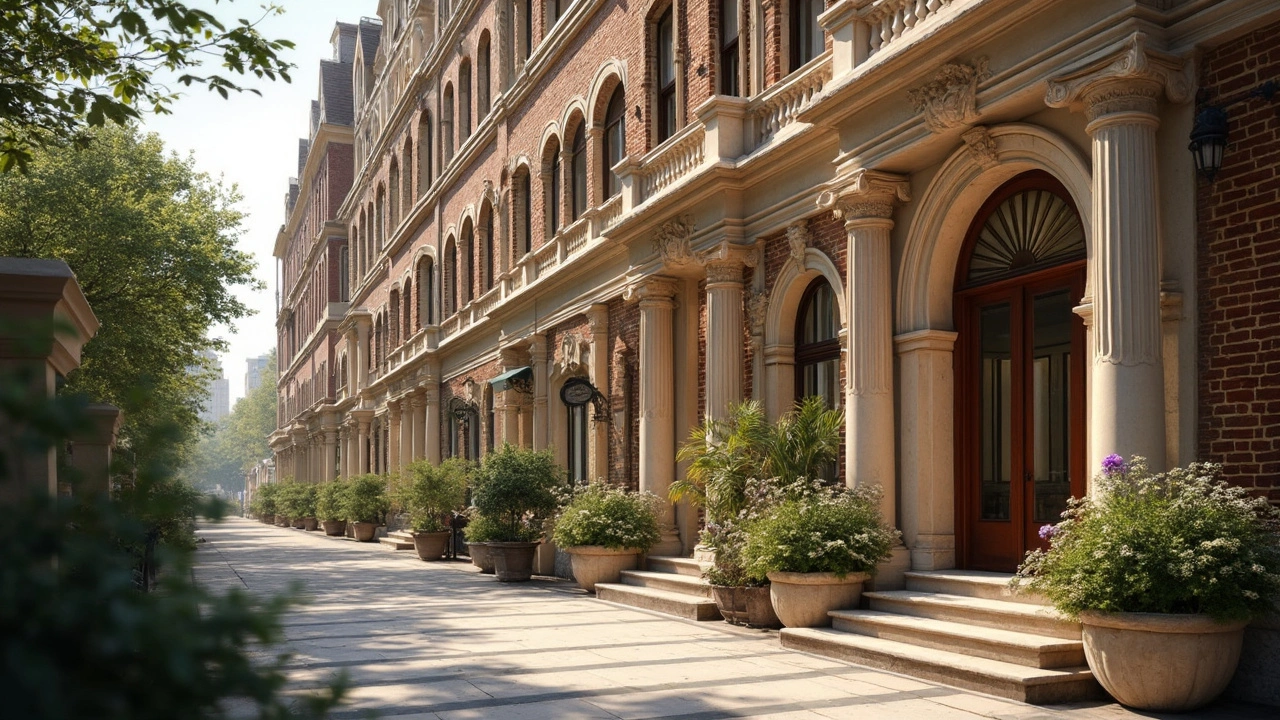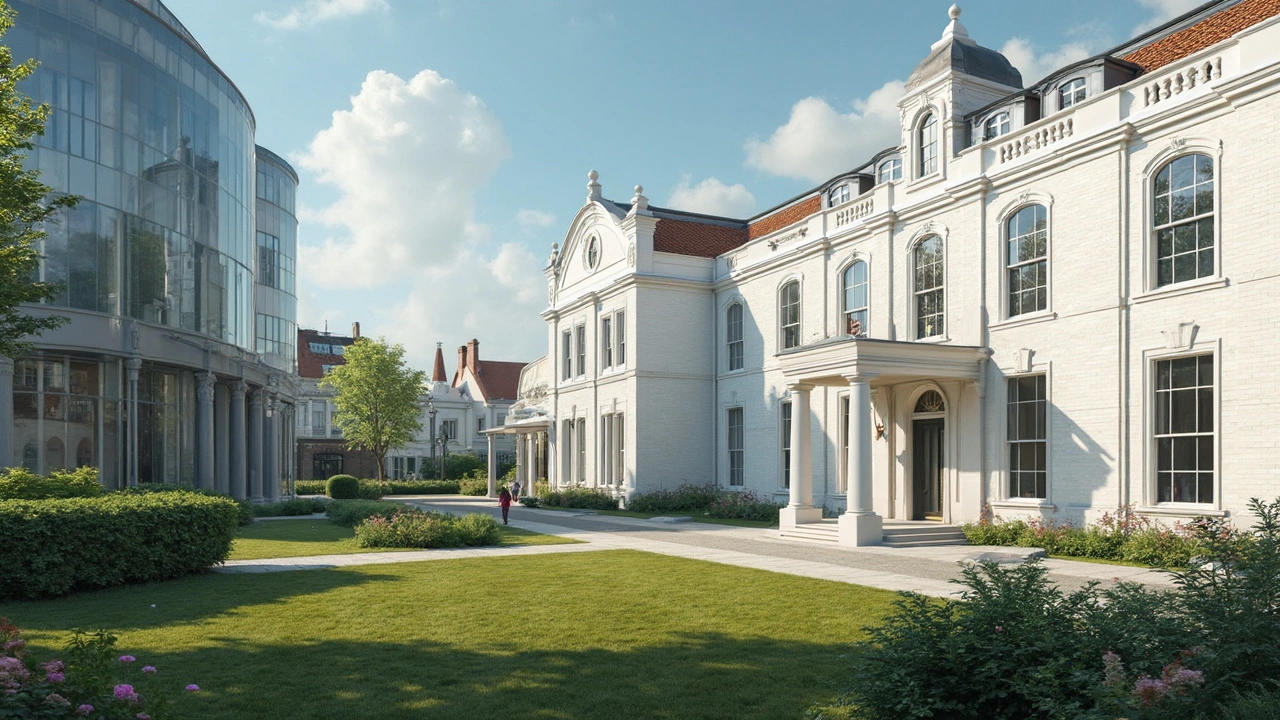Exploring the Grandeur of Federal Architecture
 Mar, 15 2025
Mar, 15 2025
Federal architecture isn't just about old, fancy buildings; it's like taking a walk through America's early history. Imagine the late 1700s, a young nation full of potential and ready to show it. That's when federal architecture became the 'in' thing, with its balanced designs that made everything feel just right.
But what makes it really stand out? Well, it's the mix of classic elegance and a touch of new-world charm. You got those red bricks, white columns, and simple yet stylish details that scream sophistication. It's in places like the White House and Thomas Jefferson's Monticello, which are still jaw-dropping examples.
Today, this style isn't just preserved in museums. It's on Main Streets, in revitalized downtowns, and even in modern houses mimicking its timeless vibe. So next time you walk by a historic building with neat symmetry and understated elegance, you're experiencing a slice of the federal style.
Origin and Historical Context
The story of federal architecture begins in the exciting times following the American Revolution. Picture this: it's the late 18th century, the United States is a brand new country and full of aspirations. One way to show its newfound identity was through architecture. They wanted to reflect strength, democracy, and classical beauty—a bit like the Roman Republic, if you will.
The style drew heavily from the works of English architects Robert Adam and his brother, James, who championed the neoclassical movement across the pond. Their designs were all about symmetry and order, which resonated with America's vision of a balanced society.
In a quote about the era, architectural historian Paul E. Johnson noted,
"Federal architecture wasn't just about buildings; it was a statement of national ideology written in stone."Don't you love that?
The Influence of Roman and Greek Styles
Federals embraced columns, domes, and pediments, hallmarks of Roman and Greek architecture, but with a restrained elegance that avoided the overly ornate approaches from before. Everything was about grace and balance, which these young leaders thought paralleled their political ideals perfectly.
Expansion Across America
This architectural trend started with the high-profile homes and public buildings of the Eastern seaboard, places like Washington D.C. were showcases of federal style. The aesthetics quickly spread to burgeoning urban areas and even into rural homes, known as the Federal-style house.
The reach of historic design wasn't just limited to America. U.S. ambassadors helped spread this style across continents, blending ideas into their posts abroad which subtly influenced local styles.
By the mid-19th century, the style evolved as tastes changed, giving rise to other movements like Greek Revival. But, federal architecture laid the foundation—literally and figuratively—for the country’s architectural journey.
Key Characteristics
When it comes to federal architecture, there are a few tell-tale signs that set it apart from other styles. First off, it's a big fan of symmetry. If you see a building where each side mirrors the other, you're likely looking at some federal influence. This balance brings a sense of harmony that's both pleasing to the eye and mind.
Material Choices
Federal buildings often feature brickwork, typically red brick, that gives them that warm, historical vibe. You might also notice white-painted wood or stone trims that highlight the clean lines typical of this style. These materials were not only locally sourced back in the day but they also hold up well over time, which is why we still see these buildings standing proud today.
Decorative Elements
Unlike the overly elaborate designs of some other styles, federal architecture keeps things crisp and simple. Decorative elements are subtle yet elegant. You might find delicate fanlights above doors and simple, refined moldings. The idea was to express dignity and order without going over the top.
Doors, Windows, and Roofs
- Doors are often set at the center with an arched fanlight above them and sidelights on each side, adding a welcoming feel.
- Windows are usually arranged symmetrically and are double-hung with six-over-six panes.
- Roofs are typically low-pitched or even flat, allowing the detailed cornices (that's the fancy trim at the top) to really shine.
These simple yet effective elements combine to make federal architecture a true classic. From its strong symmetry to choice materials and minimalist décor, this style's restraint is what makes its grandeur so enduring. Next time you're strolling through an old town square or visiting historic districts, see if you can spot these tell-tale features!

Notable Examples
When we think of federal architecture, certain landmarks pop into our heads, embodying the style's grand vision and elegant simplicity. Let's dive into a few standout examples.
The White House
No list would be complete without the White House, right? Finished in 1800, this building is the ultimate symbol of federal power and style. Its design fuses classic Roman elements with American flair, making it a stunning piece of history that's still relevant today.
Monticello
Monticello, Thomas Jefferson's home, is another perfect example. Jefferson was a huge fan of classical architecture, and it shows. This majestic estate, with its famous dome and columns, reflects both his taste and the emerging American identity of the time.
Massachusetts State House
Built in 1798, the Massachusetts State House is a striking example with a glistening gold dome that's hard to miss. It showcases the preference for symmetry and formality that defined the era, and it’s a landmark in the heart of Boston.
Charm and Influence in Modern Times
Aside from these, small towns across the U.S. have their share of federal-style gems, in historic districts where charming symmetries meet red brick elegance. They're places where history hugs the present, and offer a glimpse into our past.
Today, the influence of these examples can even be seen in new constructions that borrow one or two elements, blending them seamlessly into modern designs.
Influence on Modern Design
When folks think about historic styles making a comeback, they often imagine grand, elaborate designs. But what about federal architecture? Well, it's still shaping how we build today, mainly because of its focus on simplicity and elegance.
The clean lines and symmetry that define the federal style have found their way into modern architecture. You see these elements in the minimalist trends popular today. It's like architects are using the past to create something sleek and simple, yet classy.
Bringing Tradition Into the Present
Federal architecture isn't just about looking pretty; it's also about practicality. Modern architects love borrowing ideas like open spaces and big windows to create bright, airy environments. These features are both functional and inviting, making them favorites in contemporary home design.
- Symmetry in building facades offers a balanced and harmonious aesthetic.
- Classic columns add a touch of sophistication and strength.
- Brickwork, often seen in federal buildings, is durable and energy-efficient.
Statistics and Facts
Here's a little insight that might surprise you:
| Feature | Percentage of Influence in Modern Homes |
|---|---|
| Symmetry and Balance | 65% |
| Classic Facades | 45% |
| Energy Efficiency Design | 70% |
These percentages give an idea of how much modern architecture still leans on its older counterpart for direction. In urban planning and sustainable design movements, too, federal architecture plays a part by encouraging efficient use of space and resources.
So, next time you walk through a neighborhood with homes that echo the balanced, brick-clad look of federal design, you're not just looking at buildings. You're seeing a style that continues to inspire and transform the modern landscape.